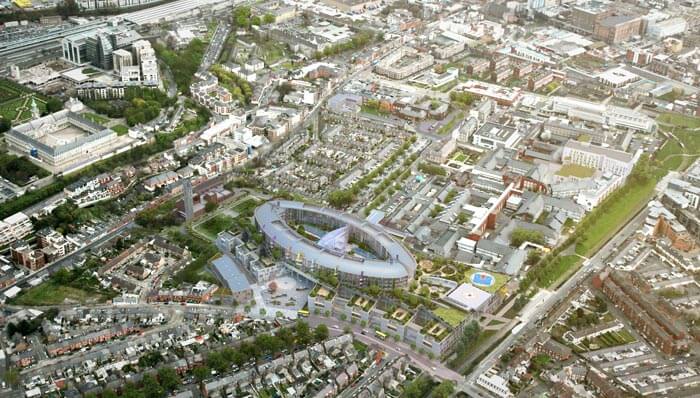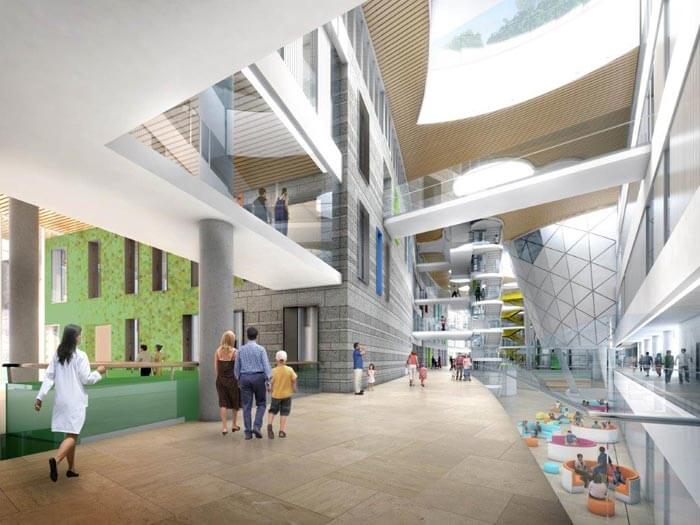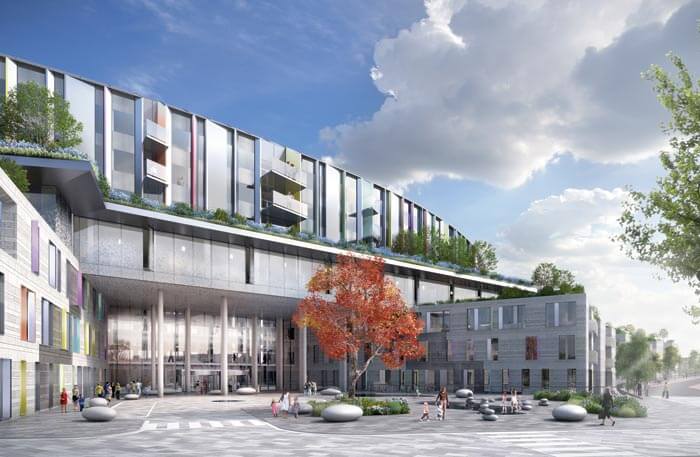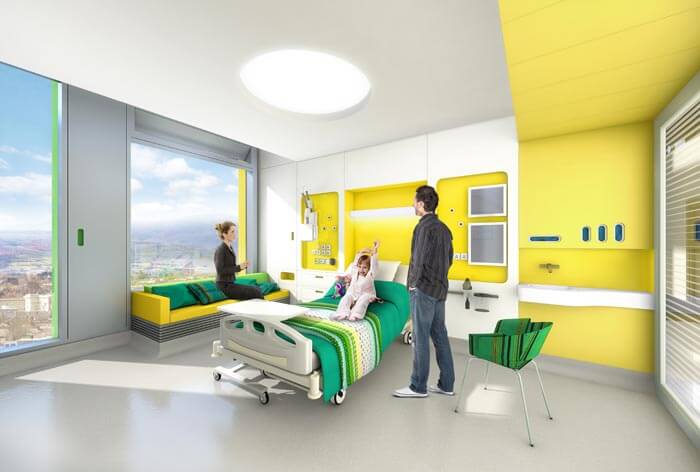Ireland is finally getting a new children’s hospital, a world class facility that the children, young people, their parents, and the staff from the three Dublin children’s hospitals need and deserve, writes Eilísh Hardiman, Chief Executive of the Children’s Hospital Group.

Currently children are being treated in three children’s hospitals – Our Lady’s Children’s Hospital Crumlin, Temple Street Children’s University Hospital, and the National Children’s Hospital at Tallaght Hospital – and while the dedicated and valued staff do an amazing job, many of the facilities are no longer fit for purpose. Furthermore, children, families and staff are often required to travel between the three hospitals to secure or deliver the different kind of specialist care that can be required when dealing with complex illnesses. This is not in the best of interests of the child, the family, nor the healthcare staff.
Together, this tri-location of paediatric, maternity and adult healthcare services will form the basis of one of the best medical campuses in Europe.
A single tertiary children’s hospital with all specialities under one roof, will serve our country so much better. The new hospital will be located on a 50-acre campus shared with St. James’s Hospital, one of the country’s leading teaching and research intensive tertiary hospitals and, in time, with the relocated Coombe Women and Infants University Hospital. Together, this tri-location of paediatric, maternity and adult healthcare services will form the basis of one of the best medical campuses in Europe.

The new maternity hospital will be re-located adjacent to the new children’s hospital so that new-born infants that need urgent medical care can be transferred across a corridor immediately to the new children’s hospital, and mothers who need acute medical care will be transferred directly to St. James’s Hospital. Tri-location of paediatric, adult and maternity services has benefits for neonates, children, young adolescents, and adults.
Over 2,500 undergraduate and post graduate students will come to the new children’s hospital on an annual basis to learn and gain knowledge and skills in acute paediatrics.
It is critically important for a children’s hospital to be located beside an adult hospital, as well as a maternity hospital, as some children need to be treated by consultants who work in both adult and paediatric services -specialities, such as cardiac surgery, neurosurgery, dermatology, burns, maxillofacial surgery, orthopaedics and ENT. Co-location with St James’s also provides for a best practice model for transition to adult services for children and young people with chronic conditions, for example those with haemophilia, sickle cell disease and other blood disorders, cancer, cleft lip, craniofacial, arthritis, epilepsy, gynaecological disorders, chronic skin conditions and immunodeficiency conditions.

Along with a campus wide approach to sharing services and infrastructure, this tri-location also facilitates the scale and scope for shared learning in clinical practice, research, innovation, and education. Over 2,500 undergraduate and post graduate students will come to the new children’s hospital on an annual basis to learn and gain knowledge and skills in acute paediatrics. The campus will also be home to a new Children’s Research and Innovation Centre.
In our new children’s hospital there will be 473 beds, and each of the 380 in-patient rooms will have an ensuite bathroom and a bed for a parent to sleep and stay over with their child. In total, there will be 6,000 rooms including theatres, clinical rooms, day care, as well as spaces for families and parents to work and relax. There will also be four acres of outdoor space and 14 gardens –including the rainbow garden that will be enclosed, at the in-patient level with dedicated spaces for children who have a risk of infection. This will be an outstanding and landmark facility for Ireland, one that we can all be proud of and that will support improved clinical outcomes.

In addition to services on the campus shared with St James’s Hospital, we are also creating two new paediatric outpatient and urgent care centres at Connolly Hospital on the north side of Dublin and Tallaght Hospital on the south. Along with the regional paediatric units in Limerick, Cork and Galway and the 13 local paediatric units, these two new paediatric outpatient and urgent care centres will work intrinsically with the new children’s hospital to deliver the National Model of Care for Paediatrics and Neonatology. This will be a model of care that will see children receive the right care, at the right time, in the right location and, where possible, close to home. Most paediatric care in Ireland is delivered locally. In 2016 for example, only 20.5% of the children admitted to the three Dublin children’s hospitals were from outside the greater Dublin area.
The National Model of Care for Paediatrics and Neonatology was developed through extensive engagement with parents’ representatives, GPs, community colleagues and hospital staff in all acute paediatric and neonatal services. It outlines where and how acute paediatric services are best provided across the health system, with the new children’s hospital designated as the central component of an integrated clinical network for acute paediatrics. Multiple health policy reports exist to support this service configuration for contemporary and sustainable paediatric services, and reflect how acute hospital services are developing in other countries.
While the new children’s hospital will be delivered in 2021, work on the integration of services is already underway. Clinical Directors were appointed in 2015 and with other clinical leaders, such as Directors of Nursing, they are busy working with their teams to prepare for coming together under one roof. This integration process is a complex task and the staff are working together to plan for this reconfiguration of services.
We are more than a decade on from the first health policy position on acute paediatric services – the McKinsey Report (2006) and now – finally – we are now weeks from starting construction of our new children’s hospital; a development that the children, families and staff need and deserve.

